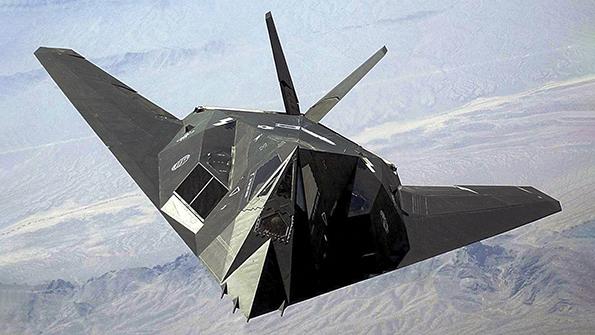
Ask the Editors: The Aviation Week Network invites our readers to submit questions to our editors and analysts. We’ll answer them, and if we can’t we’ll reach out to our wide network of experts for advice.
Aviation Week Defense Editor Steve Trimble answers: It is fair to say that the U.S. Army is on a missile-buying spree. Since the signing of the Intermediate-Range Nuclear Forces Treaty in December 1987, the service’s missile inventory had been limited to the 300-km (186-mi.) range of the MGM-140 Army Tactical Missile System and 70-km range of the M-270 Multiple Launch Rocket System. But the U.S. and Russia withdrew from the treaty on Aug. 2, 2019, freeing the Army to fill the gap in its arsenal for ground-launched ballistic and cruise missiles with conventional warheads and ranges between 500-5,000 km.
The baseline version of the Lockheed Martin Precision Strike Missile will enter service in two years with a range of 499 km, but a follow-on version due to be ready in 2025 is expected to have a range up to 800 km. Moreover, the Army has selected the Raytheon SM-6 ballistic missile and UGM-109 Tomahawk cruise missile for a new ground-launched role, with ground-launched prototypes scheduled to debut in 2023. At the same time, Lockheed should be fielding the first Long-Range Hypersonic Weapon, a rocket-booster glider with a conventional warhead.
Once those weapons arrive, the Army will no longer rely on the Air Force’s inventory of bombers and fighter-bombers to hunt and destroy targets deep inside enemy territory. Indeed, the Army also is seeking to introduce in the late-2020s the Multi-Domain Sensor System, which will be able to identify and locate targets from the air and space and feed the data to their own long-range weapons.
In 1991, the Army and Air Force teamed to open the monthlong air campaign of the Gulf War’s Operation Desert Storm against Iraq during the Gulf War. Task Force Normandy paired two Boeing AH-64As Apaches armed with Lockheed AGM-114 Hellfire missiles with two Sikorsky MH-53E Pave-Low helicopters. At the time, the latter was one of the few U.S. weapon systems to have integrated GPS receivers, which allowed the MH-53Es to guide the AH-64As to their targets: two Iraqi early warning radars just on the other side of the border with Saudi Arabia. The destruction of those two radar sites opened a 20-mi.-wide corridor for Air Force Lockheed F-117s to fly deep into Iraqi airspace without being detected. Armed with 2,000-lb. GBU-27 laser-guided bombs, the F-117s quickly smashed through the “center of gravity” of Iraqi military leadership and forced CNN’s Baghdad-based crew off the air with the bombing of a national telecommunications hub.
Beyond 2023, the Army wants at least the option of replacing the F-117s of Operation Desert Storm with long-range missiles. As the questioner implies, that raises doubts about the need for the Air Force’s prized bomber fleet, even as Global Strike Command seeks to nearly quadruple the size of that fleet over the next 2-3 decades.
Some Air Force officials have already pushed back. “If the Air Force can do something—long-range strike, maybe—one of the services doesn’t have to do it,” Lt. Gen. David Nahom, the Air Force’s deputy chief of staff for plans and programs, said in August. “But all of us investing in a single area in just a slightly different way—it’s just not going to be affordable.”
Gen. Frank Murray, who leads the Army’s Futures Command, is the architect of the service’s long-range precision fires portfolio. I asked Murray during his appearance on Jan. 25 at the Center for Strategic and International Studies whether the Army’s investments in long-range missiles means the Air Force should buy fewer bombers. Here is his response, in full:
“[The long-range missile strategy] really started with a next-generation warfare study we did with what happened in Ukraine, in the use of . . . a concept of an operational defense. And most people refer to this operational defense as anti-access, area-denial.
“It comes from both [Russia and China] studying the American way of war since about Desert Storm, in terms of how we like to fight. And it was really all about separating the [U.S.] Joint Force in time, space and function, and most importantly function.
“So the modeling and simulation we’ve done is [ask], how do you begin to take down that operational defense. Because at least from an Army perspective, and I think their services would agree that defenses are great, but you don’t win in the defense. You win in the offense in some form of maneuver on the ground, air and the sea.
“So how can the Army almost reverse roles with the way we fought Desert Storm or in Operation Iraqi Freedom, and begin to take down portions of this aerial denial complex, and open up windows of opportunity for the rest of the Joint Force. And, specifically, the rest of the Joint Force would be the Air Force strike assets and long-range assets.
“And so I think they—[long-range missiles and bombers]—are actually complementary not contradictory. I think we’ve got to have both.”






Comments
Take the time looking at what a constantly moving Naval combatant has to deploy as a defense against missiles raids.